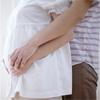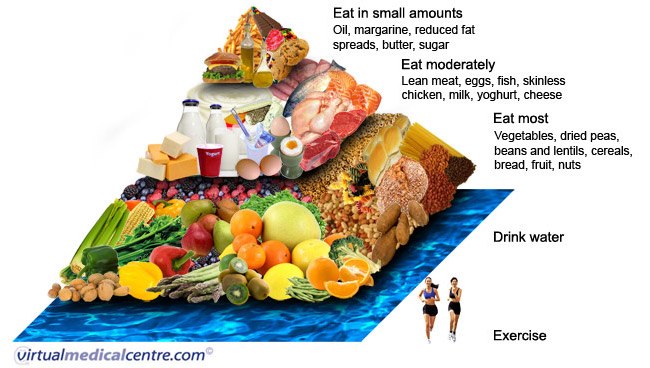Introduction

Historically, it has been said that for every pregnancy there is a loss of one tooth. Of course this is not the case but there are some factors that make pregnancy a time where the dental health can become worse over the period of the pregnancy.
There is a hormonal alteration in the pregnant individual, and most of the changes are caused by a hormone called oestrogen. There is also a bacteria found in the mouth called Prevotella intermedia. In pregnancy, there is an increase in the number of hormones and bacteria, which causes the amount of inflammation to increase. Inflammation will occur to a greater extent when there is more plaque and calculus on the teeth, so even slightly poor dental hygiene could result in lots of bleeding gums, or gum disease due to inflammation.
Gum disease in pregnant individuals is also linked with preterm, low birth-weight neonates (newborns).
Another concern is that pregnant women will feel quite nauseous and may frequently vomit. This will make looking after teeth much harder, and will contribute to dental erosion due to the presence of stomach acids coming into the mouth. The effects of vomiting on the teeth can be minimised by consuming dairy products, rinsing with a bicarbonate rinse (warm water, half tablespoon of salt, and a tablespoon of bicarbonate soda), or purchasing CPP-ACP from a dentist.
 |
For more information on milk products and teeth, see the Dairy Australia fact sheet on dental health. |
Pregnant individuals may also have cravings for sugar-rich foods, which will cause an increased chance of dental decay, as sugar is one of the main reasons for getting decay and needing fillings. This will consequently lead to an increase in dental visits, expenditure, and possible loss of teeth due to tooth decay.
Nutrition and its effect on the foetus
The development of teeth starts around 6 weeks after the embryo starts to form. There is a lot of research going on at the moment to determine if anything affects the foetus’ development of the teeth and jaws prenatally.
During the early phase of tooth growth, damage can occur to the teeth and jaws due to things like malnutrition. These can have irreversible changes on the teeth and jaws.
Poor maternal nutrition can have the following effects on the foetus:
- Evidence from underdeveloped countries with poor nutrition shows that a defect in enamel called enamel hypoplasia is common. People with enamel hypoplasia have a much greater chance of developing tooth decay on those areas; and
- Poor prenatal nutrition is associated with a higher risk of mothers having tooth decay, and consequently are also more likely to transmit decay-causing bacteria to their children through oral contact e.g. kissing and sharing cutlery.
Guidelines for expectant mothers
- A woman planning on a pregnancy should see a dentist prior to becoming pregnant if at all possible, to complete all dental treatment required and to assess what level of risk she is at.
- Pregnancy is a critical time to focus on preventing dental problems.
- Emphasis on the food pyramid, eating a well balanced diet, along with lots of calcium is of great importance. Sweets and low-nutrient foods should be minimised.
- It is important to concentrate on low fat, and low sugar snacks if at all possible i.e. celery sticks, carrot sticks, milk, cheese, other milk products as these will minimize the risk of dental decay.
- Reducing those bacteria that cause tooth decay via mouthwashes containing chlorhexidine gluconate has been shown to reduce both the transfer of decay-causing bacteria to their children and also tooth decay in the children.
Information on re-publishing of our images
Kindly written by Dr Akhil Chandra BDSc. (Hons UWA)
Dentist, Whitfords Dental Centre and Editorial Advisory Board Member of the Virtual Dental Centre
More information
 |
For more information about pregnancy, including preconception advice, stages of pregnancy, investigations, complications, living with pregnancy and birth, see Pregnancy. |
 |
For more information on nutrition, including information on types and composition of food, nutrition and people, conditions related to nutrition, and diets and recipes, as well as some useful videos and tools, see Nutrition. |
 |
For more information on nutrition and dental health, see Nutrition for Healthy Teeth. |
References
- Fitzsimons D, Dwyer JT, Palmer C, Boyd LD. Nutrition and oral health guidelines for pregnant women, infants, and children. J Am Diet Assoc. 1998 Feb;98(2):182-6.
- Tsamtsouris A, Stack A, Padamsee M. Dental education of expectant parents. J Pedod. 1986 Summer;10(4):309-22.
- Newman M, Takei H, Klokkevold P. Carranza’s Clinical Periodontology. 10th ed. Carranza F, editor. St Louis: Saunders, Elsevier; 2006.
- Chiodo GT, Rosenstein DI. Dental treatment during pregnancy: a preventive approach. J Am Dent Assoc. 1985 Mar;110(3):365-8.
- Ferris GM. Alteration in female sex hormones: their effect on oral tissues and dental treatment. Compendium. 1993 Dec;14(12):1558-64, 66; quiz 71.
- Offenbacher S, Katz V, Fertik G, Collins J, Boyd D, Maynor G, et al. Periodontal infection as a possible risk factor for preterm low birth weight. J Periodontol. 1996 Oct;67(10 Suppl):1103-13.
- Tinanoff N. Association of diet with dental caries in preschool children. Dent Clin North Am. 2005 Oct;49(4):725-37.
- Tinanoff N, Palmer CA. Dietary determinants of dental caries and dietary recommendations for preschool children. J Public Health Dent. 2000 Summer;60(3):197-206; discussion 7-9.
- Proffit W. Contemporary Orthodontics. 3rd ed. St Louis: Mosby, Inc; 2000.
- Davies GN. A comparative epidemiological study of the diet and dental caries in three isolated communities. Ala Dent Rev 1958;4:19-28.
- Johnsen D, Krejci C, Hack M, et al. Distribution of enamel defects and the association with respiratory distress in very low birth weight infants. J Dent Res 1984;63:59-64.
- Kohler B, Bratthall D. Intrafamilial levels of Streptococcus mutans and some aspects of the bacterial transmission. Scand J Dent Res 1978;86:35-42.
- Kohler B, Andreen I, Jonsson B. The effect of caries-preventive measures in mothers on dental caries and the oral presence of the bacteria Streptococcus mutans and lactobacilli in their children. Arch Oral Biol. 1984;29(11):879-83.
- Leverett DH, Adair SM, Vaughan BW, Proskin HM, Moss ME. Randomized clinical trial of the effect of prenatal fluoride supplements in preventing dental caries. Caries Res. 1997;31(3):174-9.
All content and media on the HealthEngine Blog is created and published online for informational purposes only. It is not intended to be a substitute for professional medical advice and should not be relied on as health or personal advice. Always seek the guidance of your doctor or other qualified health professional with any questions you may have regarding your health or a medical condition. Never disregard the advice of a medical professional, or delay in seeking it because of something you have read on this Website. If you think you may have a medical emergency, call your doctor, go to the nearest hospital emergency department, or call the emergency services immediately.








